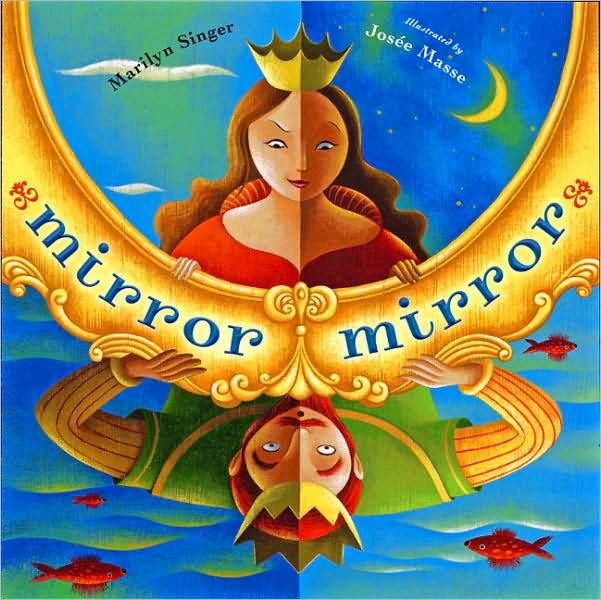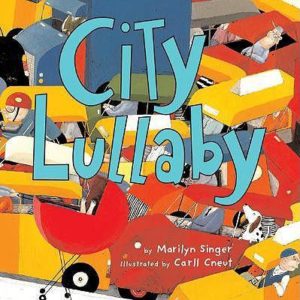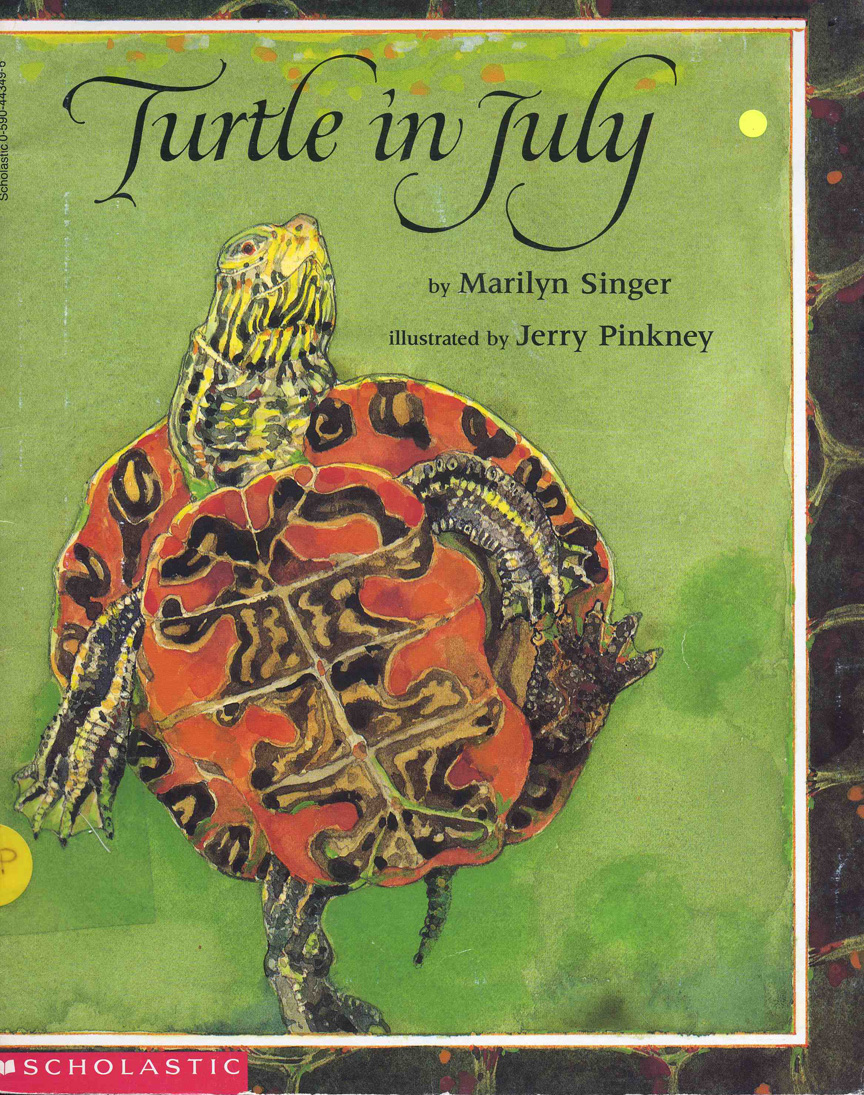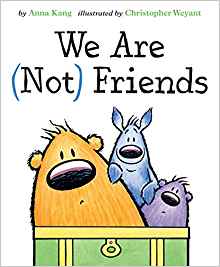 One of the books we (quite literally) wore out in our family was The Monster at the End of this Book written by Jon Stone and illustrated by Michael Smolin. My kids simply loved how Grover “talked” to them from the pages, begging them not to keep reading because he was 100% sure that at the end of the book, there’d be a monster. Yikes! As a parent reading with my kids, I loved how when Grover asked my kids questions (like “Do you know that you are very strong?”), my kids always roared and flexed their little girl muscles in response. Fun for everyone!
One of the books we (quite literally) wore out in our family was The Monster at the End of this Book written by Jon Stone and illustrated by Michael Smolin. My kids simply loved how Grover “talked” to them from the pages, begging them not to keep reading because he was 100% sure that at the end of the book, there’d be a monster. Yikes! As a parent reading with my kids, I loved how when Grover asked my kids questions (like “Do you know that you are very strong?”), my kids always roared and flexed their little girl muscles in response. Fun for everyone!
For those who like fancy terms, we’re talking about a type of metafiction here, meaning a book that’s fully aware that it’s a book, which allows the author and/or illustrator to play with the normal conventions of a book. (Here are some wise words and explanations about breaking the fourth wall from Romelle Broas’ blog.) When used in a picture book, breaking the fourth wall often results in a great read-aloud experience since kids are invited to be part of the plot. Who doesn’t want to join in with a terrific story, right?
I went through my PB bookshelf the other day with the idea of organizing them not by title or author name, but by type of book. And what I found was this–I have a LOT of books that break the fourth wall.
So, here are a few OPB favorites, plus a couple of ones you might not yet know, but surely will come to love. Did I miss your favorite? If so, tell me in the comments. I’ll make sure to get a copy so I can add it to my Fourth Wall shelf.
Six Classic Fourth-Wall-Breakers
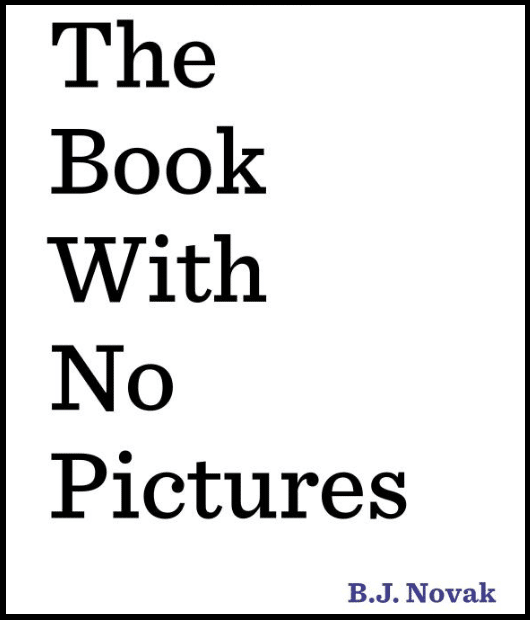 The Book with No Pictures by B.J. Novak
The Book with No Pictures by B.J. Novak
He was terrific as Ryan the Temp in The Office, but he’s proven to be equally amusing as a picture book writer, too. Wait until the adults have to say “BLORK” or “GLIBBITY GLOBBITY” or “BLURRF”! Fun, fun, fun.
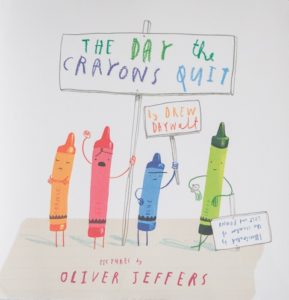 The Day the Crayons Quit by Drew Daywalt
The Day the Crayons Quit by Drew Daywalt
If you’ve ever felt that some crayons–like some people–don’t get their fair shake, then this book will prove satisfying. My fav is green, the real people-pleaser of the entire box. You’ll never look at crayons the same way again!
 Don’t Let the Pigeon Drive the Bus! by Mo Willems
Don’t Let the Pigeon Drive the Bus! by Mo Willems
The fact that it’s a Caldecott Honor winner is reason enough to give it a shot. But kids LOVE being put in charge, and that’s what the bus driver does when he has to step out. And wow, that pigeon is willing to do or say anything to get his shot behind the wheel. Good, silly fun all around.
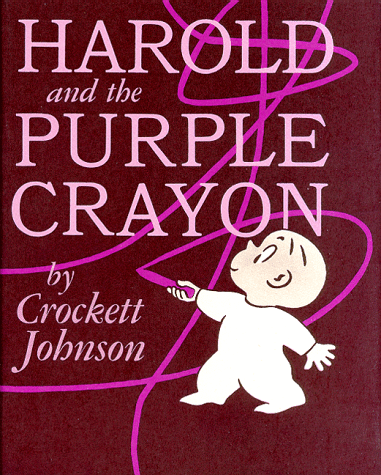 Harold and the Purple Crayon by Crockett Johnson
Harold and the Purple Crayon by Crockett Johnson
This timeless classic–written 60+ years ago–still lands well with readers today. As Harold takes his oversized crayon through the woods and past dragons before returning to bed, we see just how wonderful one’s imagination can be.
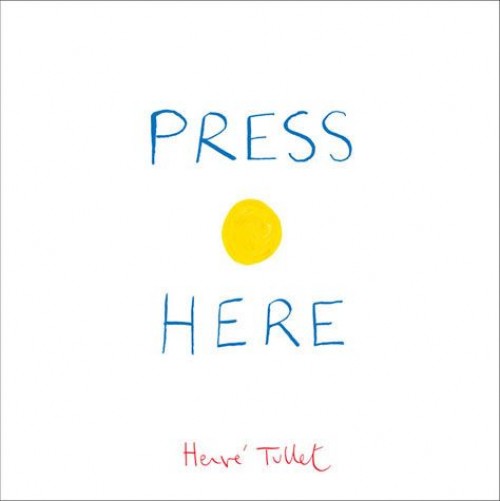 Press Here by Hervé Tullet
Press Here by Hervé Tullet
Kids who appreciate tactile interactions will love this book, which asks them to push buttons, shake the book, tilt it, and more. You might want to consider the board book version so you can be sure it’ll survive all the physical interactions. My nephew is wearing out his copy fast–it doesn’t sit for more than a day on his bookshelf before he’s enjoying it again.
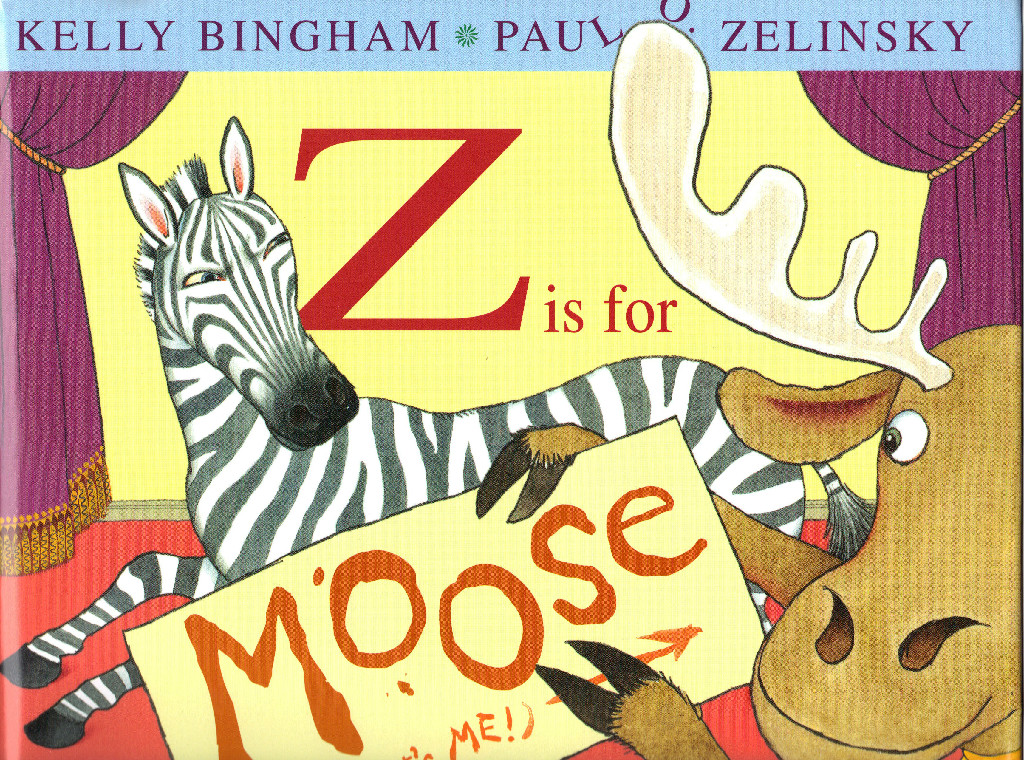 Z is for Moose by Kelly Bingham
Z is for Moose by Kelly Bingham
Zebra wants the alphabet to be simple. A is for apple, etc., but Moose is far too excited to wait his turn. This comedy of errors is loads of fun that’s made all the better by Caldecott medalist Paul Zelinsky’s outrageous images.
Six Wall-Busting Picture Books You Might Not Know
(But Definitely Should!)
 This Book Is Magic by Ashley Evanson
This Book Is Magic by Ashley Evanson
If you like Tullet’s Press Here, then this book is a must-read. Tap a hat to make a bunny appear. Utter the words to a spell to make a book–POOF–get bigger! Just watch out, though. Magic tricks don’t always end up the way one expects!
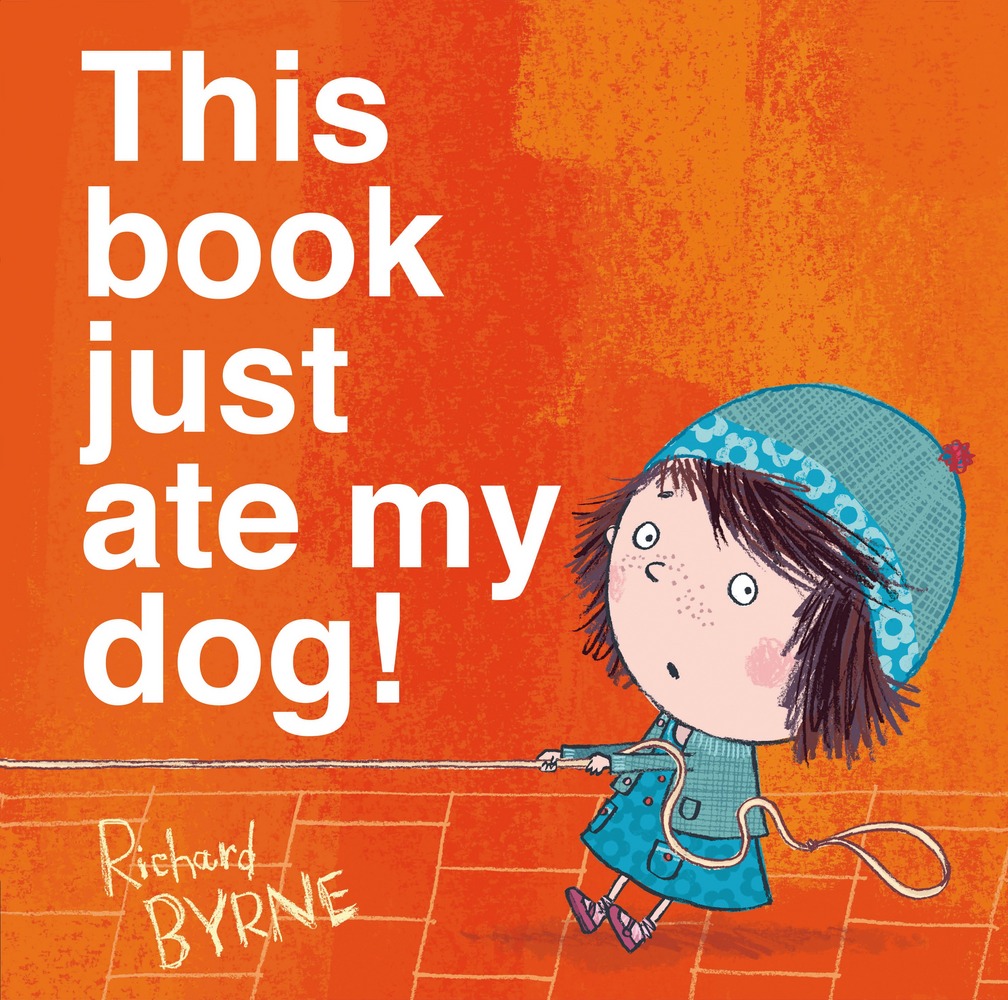 This Book Just Ate My Dog by Richard Byrne
This Book Just Ate My Dog by Richard Byrne
Want to learn what the gutter of a book is? You will in Richard Byrne’s book., because this girl’s poor pooch disappears in the gutter—the gap between pages in the center. It’ll take far more than a hard tug on the leash to make things go right in this curious story.
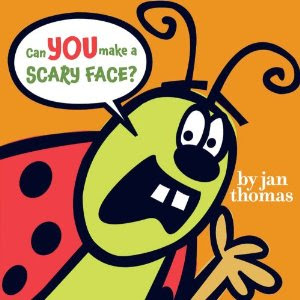 Can You Make a Scary Face? by Jan Thomas
Can You Make a Scary Face? by Jan Thomas
This bossy little ladybug will keep readers having fun. The bold, cartoon style and wild, bright backdrops help make this a memorable, vivid reading experience. Wiggling, blowing, doing the chicken dance? There’s a lot of kid fun here.
Be warned, though–this is not a good book for quiet time. Kids will make a lot of noise.
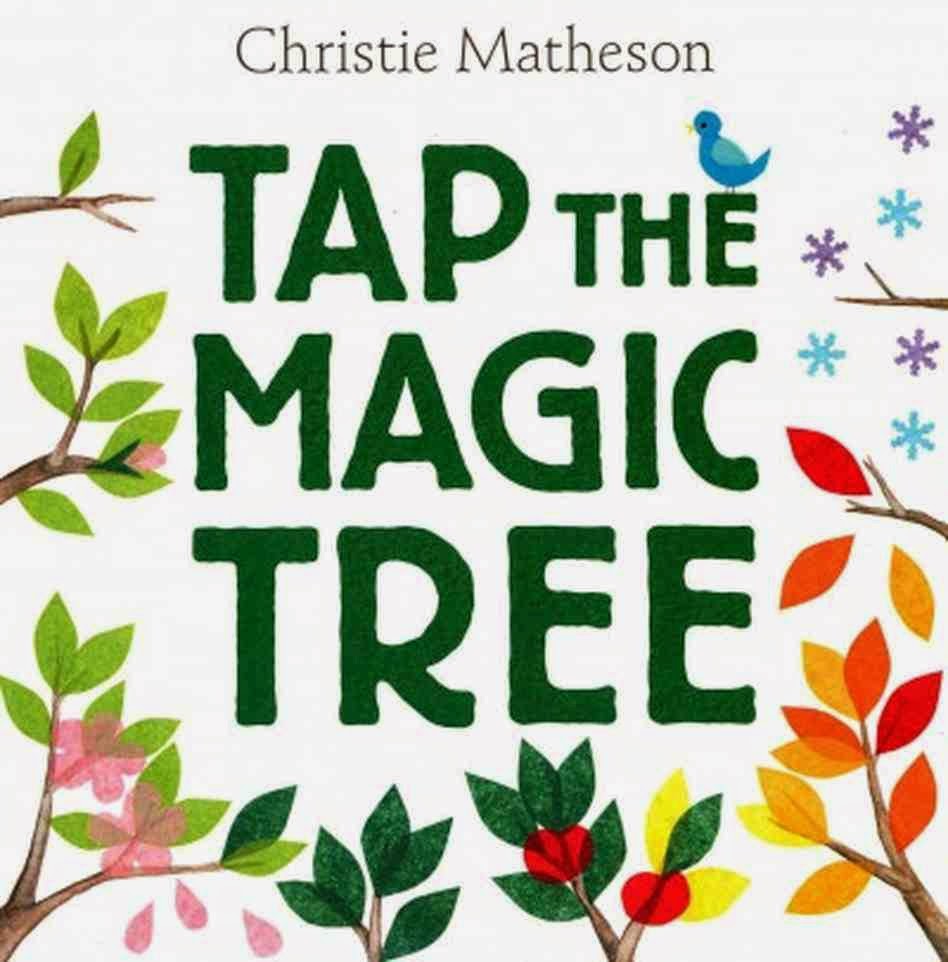 Tap the Magic Tree by Christie Matheson
Tap the Magic Tree by Christie Matheson
In this fine book, readers are asked to interact with a tree. Every page turn rewards that action, with the tree changing in some manner. While many fourth wall breakers are more about fun than anything else, this one invites contemplation and reflection.
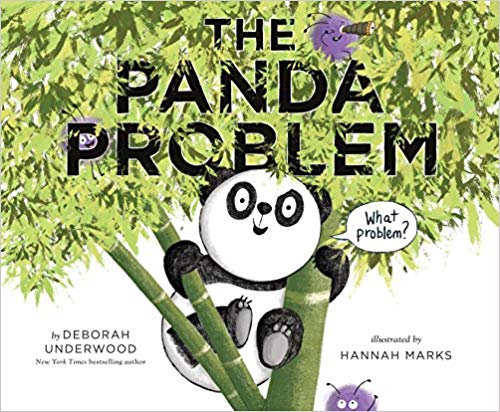 The Panda Problem by Deborah Underwood (lllustrated by Hannah Marks)
The Panda Problem by Deborah Underwood (lllustrated by Hannah Marks)
We all know how stories work, right? So does the narrator in this story, only Panda isn’t playing along. What’s a narrator to do now?
Check out the OPB review of this title for more details.
 Wolves by Emily Gravett
Wolves by Emily Gravett
Rabbits shouldn’t believe what they read in fairy tales, and neither should you. This story is pro-library and pro-fun. And if it seems a bit too dark at times, there’s a bonus alternate ending for the sensitive reader.


 This month’s Industry Insider interview is with literary agent Alyssa Eisner Henkin, Senior Vice President of the Trident Media Group. Her Twitter bio adds these two terrific bio facts: “Lemonade-Maker and Literary Cheerleader.”
This month’s Industry Insider interview is with literary agent Alyssa Eisner Henkin, Senior Vice President of the Trident Media Group. Her Twitter bio adds these two terrific bio facts: “Lemonade-Maker and Literary Cheerleader.”
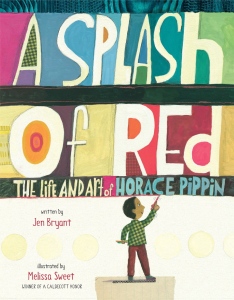
![This Is MY Room!: (No Tigers Allowed) by [Jacobson, Jennifer Richard]](https://images-na.ssl-images-amazon.com/images/I/51VZYnmBZ-L._SX260_.jpg)
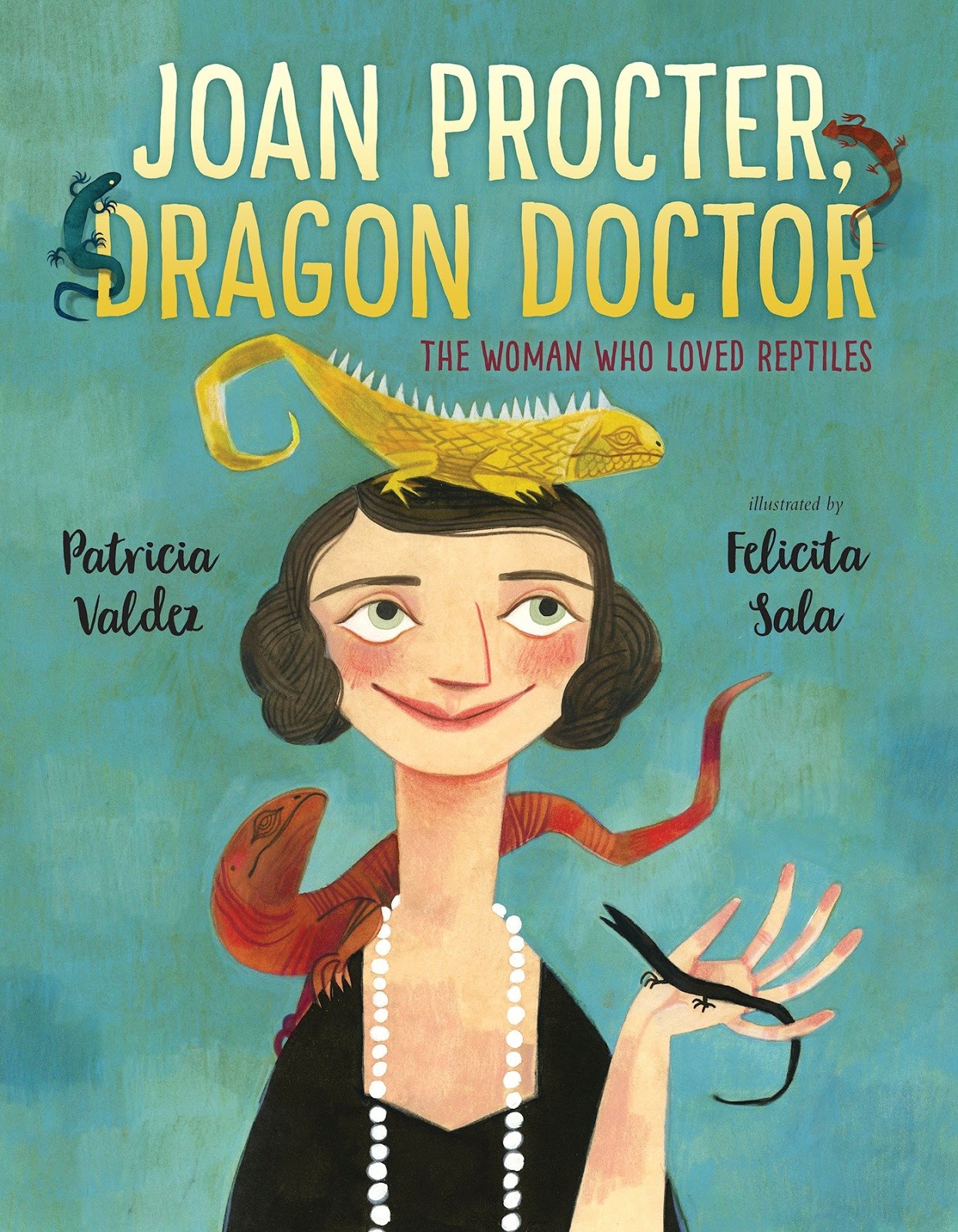
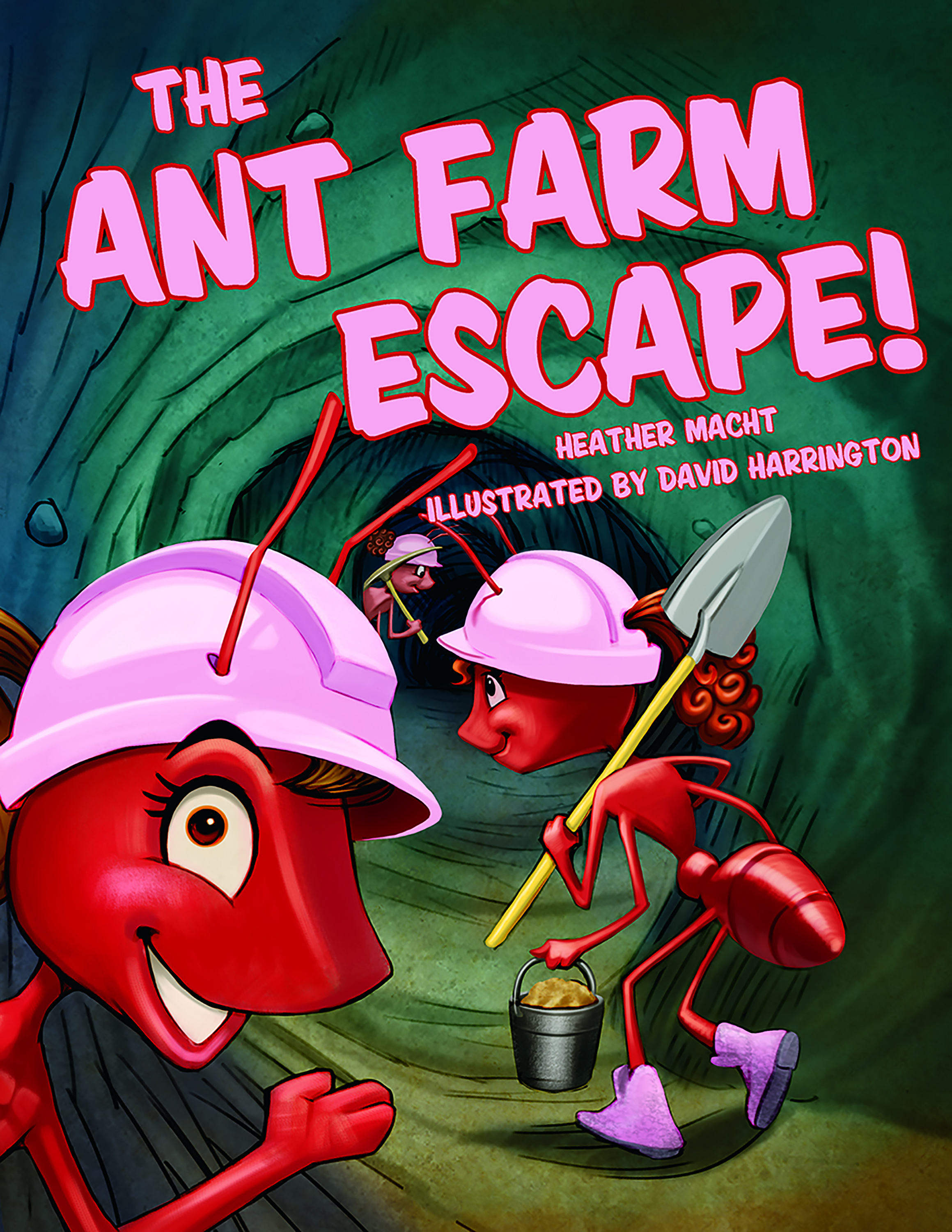
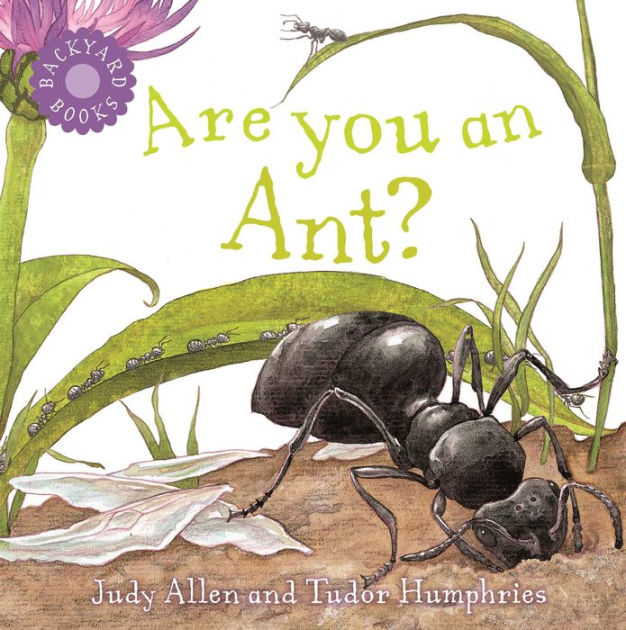
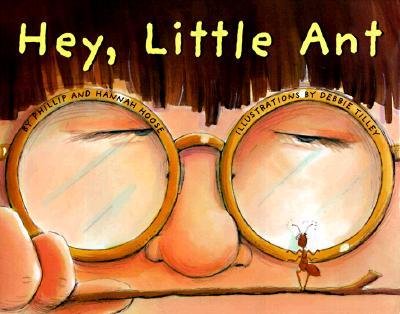
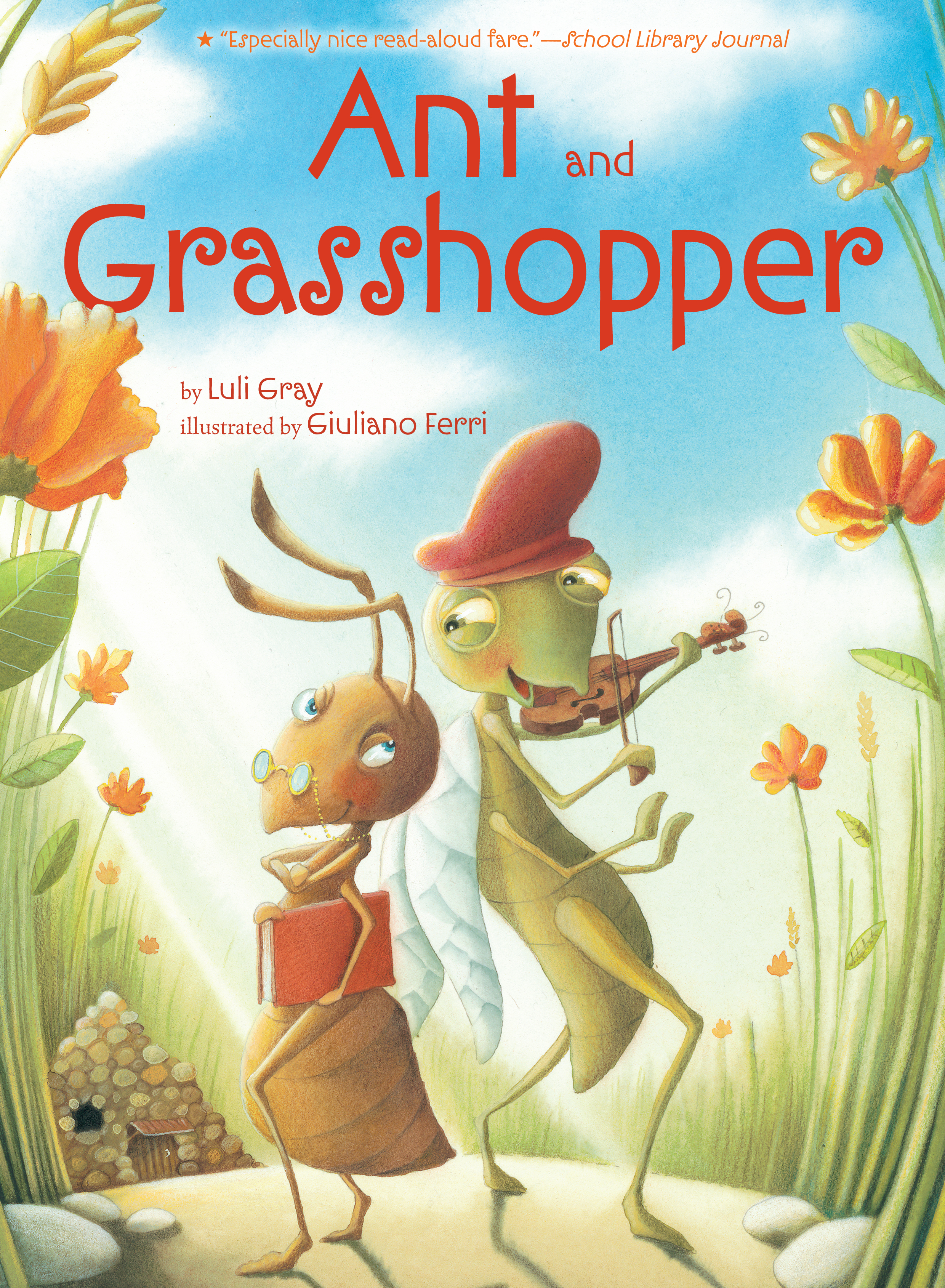
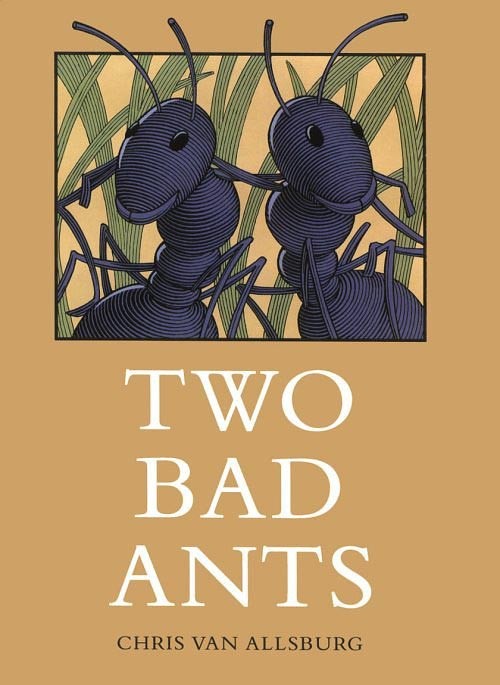
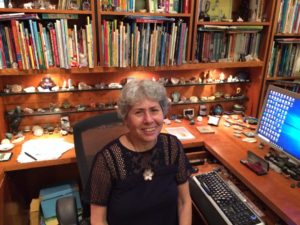 This month’s Author Interview at Only Picture Books is with Marilyn Singer, the author of 90+ books for children and young adults. In addition to being an incredibly prolific author, she’s the host of the former
This month’s Author Interview at Only Picture Books is with Marilyn Singer, the author of 90+ books for children and young adults. In addition to being an incredibly prolific author, she’s the host of the former 
